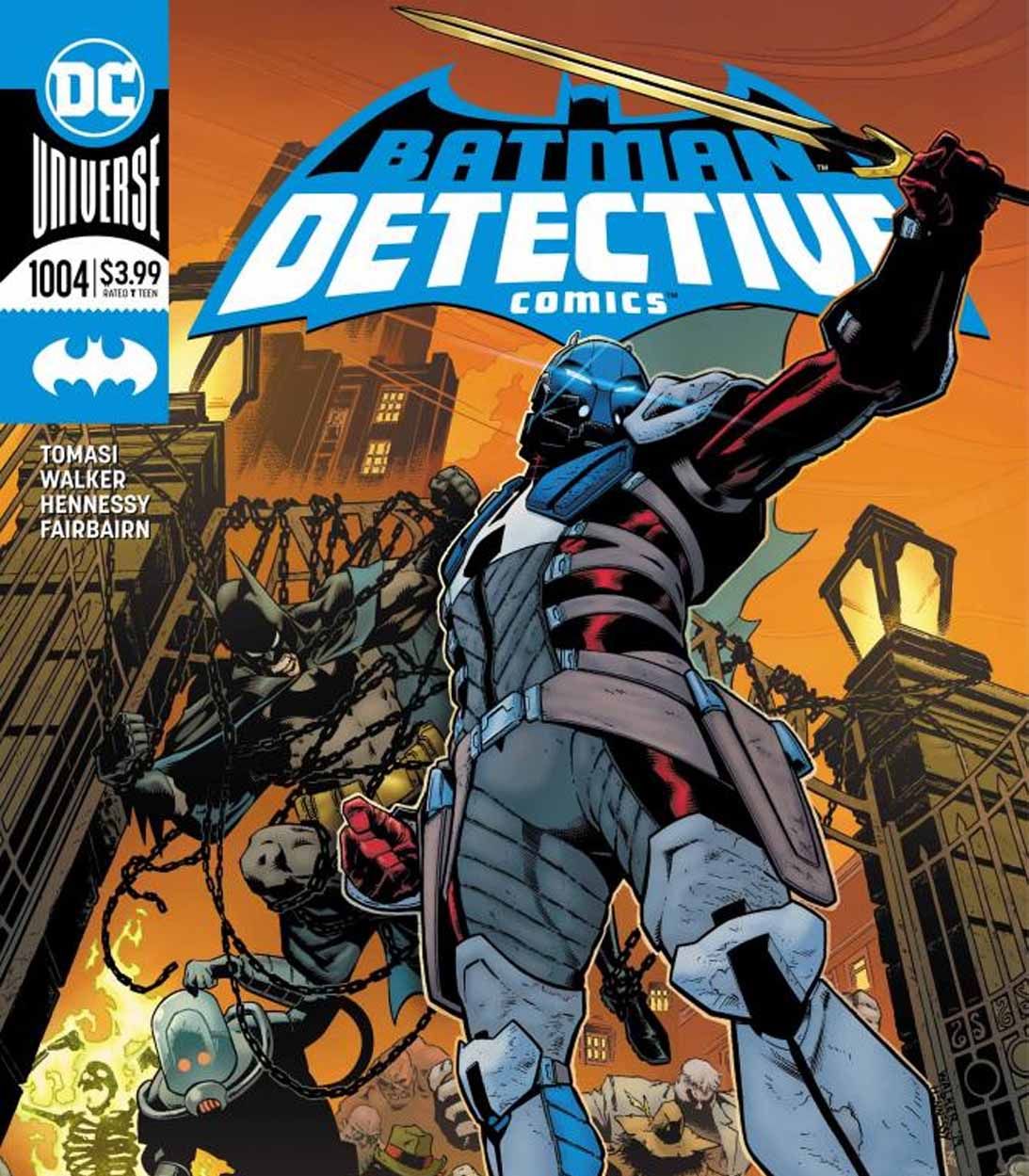REVIEW: Detective Comics #1004
- WRITER
- Peter J. Tomasi
- Artist
- Brad Walker, Andrew Hennessy
- Letterer
- Rob Leigh
- Cover Artist
- Andrew Hennessy, Nathan Faibairn, Brad Walker
- Publisher
- DC Comics
- Price
- 3.99
- Release Date
- 2019-05-22
- Colorist
- Nathan Fairbairn
Introducing the Arkham Knight into the main DC Comics continuity was always going to be a bit tricky. The character first appeared in the video game from Rocksteady Studios, Batman: Arkham Knight, where he was ultimately revealed to be Jason Todd. The game borrowed heavily from comic books, mixing the classic Batman stories A Death in the Family and Under the Red Hood, which focused on the former Robin’s presumed death and return, respectively. Detective Comics #1004 doesn’t quite reach the narrative heights in giving us the origin of the Arkham Knight as the comics the game were based on did, but it does the best with what it has to work with.
Convoluted origin stories make up one of the pillars of comic book storytelling. For every simple “my parents were murdered, and now I vow justice” launch point, there are dozens that are nowhere near as straight forward. Detective Comics #1004 explains that Astrid Arkham, who was revealed to be the person behind the Arkham Knight mask, has clear motivations as to why she’s doing what she’s doing. However, these motivations are predicated upon a gross misunderstanding and a heavy dose of suspended disbelief from the reader. And, of course, the Joker is heavily involved (isn't he always?)
Peter J. Tomasi's script is sharp, despite the shaky history it tries to build. There's no shortage of emotional resonance, even if the logic fall a bit short. But despite how solid the writing is, your mileage will vary as to whether or not you view Arkham Knight as a justified addition to DC Comics continuity. Comics are known for their long narrative reaches when threading plot points together to craft new and compelling stories, but this issue really pushes those boundaries. Tomasi has been one of the best writers on Batman-related titles for the past decade (his run on Batman and Robin was nothing short of masterful), which might be why he's able to make this new version of the Arkham Knight work so well. Tomasi double-downs on the pathos of his characters, which often more than makes up for any logical faults.
Brad Walker's art is great, even if it feels a bit uneven at times. It doesn't happen very often, but there a few panels where masked characters' faces are... off. There's a strange lack of symmetry, which can be very distracting in what is otherwise a gorgeous book. However, his take on the Joker is one of the best currently seen in comics. The line work is tight and clean, and the lack of center mass detail gives him an almost spectral appearance, as if he's haunting the comic more so than playing a major role in it. Walker's Joker isn't ethereal or abstract like Dave McKean's version of the character; instead, he's ghastly in how static he feels. His trademark grin never falters, but his eyes give him away. In fact, the vast majority of Batman's rogues gallery are drawn wonderfully and feel like brightly colored haunted house jump scare props come to life.
Detective Comics #1004 works well enough to justify the story it tells. While it may not have the emotional resonance of the Jason Todd saga from Batman: Arkham Knight, Tomasi and Walker have taken the titular character and crafted their own beast, which is admirable. The art is solid and the writing gives readers just enough to connect to Astrid Arkham's plight that, if you're willing to squint hard enough, you can view as being logical within the context of the issue. It's hard to say if this take on the Arkham Knight will become a mainstay in Batman's Rogues Gallery, but she's an interesting enough character to focus on for at least this story arc.

